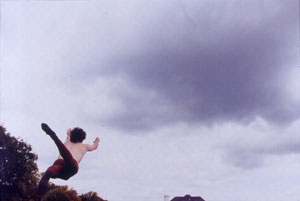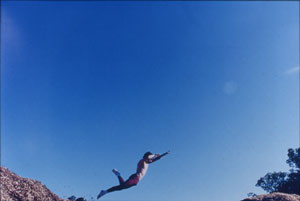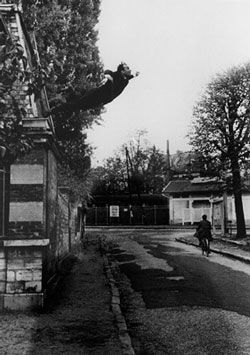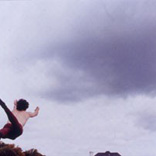When I was asked by the Harry Abrams Publishing Company to put together a book of special TX homes, I began to think about architects, cities and the hinterlands where wonderful, yet unsung, works of architectural skill might be lurking. I did not at first appreciate what putting the list together would do for my knowledge of TX. But I had the creeping sense that I had never been more of a Texan.
When I was asked by the Harry Abrams Publishing Company to put together a book of special TX homes, I began to think about architects, cities and the hinterlands where wonderful, yet unsung, works of architectural skill might be lurking. I did not at first appreciate what putting the list together would do for my knowledge of TX. But I had the creeping sense that I had never been more of a Texan. And then that sense began to grow when virtuoso architectural photographer Grant Mudford arrived from Los Angeles with his multi-talented assistant Darrin Little to begin the photo shoot of the houses I had selected. Because we couldn’t just parachute into the places we were going, because in fact, we needed to travel long miles in between them, all of us took in a broader notion of Texas than the book could ever encompass. I provided a historical commentary as the miles stretched in front of us. Grant played Jimmy Rogers songs, managing to drive across Texas while ‘yodeling his way back home’ to his boyhood in Australia where he first heard his father singing the songs that painted Rogers’ indelible picture of Texas. And Darrin, well Darrin typed furiously away on the computer, documenting this merry sojourn across Texas that you find here, illustrated by the inimitable Grant Mudford. -Lisa Germany
I’m happy to be on this roadtrip/worktrip with Grant. He got the call six months ago and I’ve been crossing dates off the calendar ever since. Ironically, just before we left L.A., a lot of things started to click into place for me, so that I was a bit ambivalent about leaving town, but the trip was already set, and I’d been ramping myself up to do it for so long that there wasn’t a choice anymore, not matter how good things were going for me locally.
We stopped the first night in Phoenix and settled into our Motel 6 room with the first bottles of sake and something left over from a party I’d co-hosted in Los Angeles the previous night. Someone had vomited right in front of our motel room, as luck or chance or preordination would have it, and I took it as some kind of challenge to our intentions to make the trip. The next morning we had a late breakfast at a local Mexican restaurant (see picture). Beef tamales and blaring Latino jukebox music got us ready for our push through New Mexico to El Paso, the first shooting destination for the book project.
El Paso:
Sunday morning, October 22, we arrived at the house in El Paso that we were to shoot. Unbelievable weather, like Los Angeles looked when we’d left three days previous — bright, clear air and strong morning sunlight, a bit chilly. I had forgotten that El Paso has mountains, lots of them in the morning distance, a sort of semicircular tiara resting on the forehead of the city. Texas roadhouse steaks, lots of red wine for Grant and myself, whisky sours for Lisa and peanut shell floors followed a pretty good day of shooting at the first house.
Monday morning we ate breakfast at Denny’s and got a piggyback Wi-Fi connection from the La Quinta motel next door. (FYI: Motel 6, our budget accommodations for I think the entire road trip, does not offer Wi-Fi. The current situation of traveling with a laptop and trying to find a Starbucks or whatever business offers Wi-Fi is analogous to 15 years ago when you had to locate a phone booth to pull over and make a call. I predict nationwide Wi-Fi service in the next 10 years.) And then the three of us hit the long road to San Antonio, approximately eight hours from El Paso. The highlight came about three hours from San Antonio in a town called Ozona. Five minutes into eating our Sonic Burgers adjacent to the highway, a busload of high school track students from Alpine piled into the restaurant. Like, one minute we’re eating in an empty burger joint in the middle of nowhere, and the next minute there’s this storm of high school kids, jumping around, chattering, filling up the vacuum of the place with kinetic energy, with life. They were variations of tall and skinny adolescents, mostly Caucasian and African Americans, and all of them were wearing either blue track jerseys or (here’s the charm) pink school T-shirts with Alpine Running Bucks printed on the front. The backside of the shirts said, in bold, san-serif type: ‘If We Were Playing Tag, You’d Be It Forever.’
San Antonio:
We struggled greatly to reach the Motel 6 in downtown San Antonio. The freeways here are Byzantine in terms of navigation. At 211 N. Pecos Avenue, downtown, you will find not only a Motel 6 and McDonald’s (in close enough proximity to one another that you feel like you should be able to order McMuffins or whatever from your room), but one of probably many unofficial meeting points in town for immigrant labor looking for day work. From my open motel door at 6:30am, I counted maybe 20 hungry-looking Mexicans shuffling their feet and waving to almost every truck that pulled into the drive-thru window. How are these day laborer pick-up points established in the first place? There are many such illicit pick-up points in Los Angeles, usually around a few of the larger Home Depots. You could write a book on this subject.
We stayed two nights in San Antonio. At the end of the first day (or night, as it were, as the photo shoot the first day was very difficult technically to set up and light), we pushed ourselves to see the Riverwalk, as it was only eight or 10 blocks from the motel, the McDonald’s, the day laborers. Even though it was 10:30 pm before we were in a position to go out, and facing a 6:15 am wake-up call for the next day’s shoot, we felt we had to. You do things sometimes because you see it’s the only chance, the ‘now or never’ situation. The Riverwalk looked better than I remembered it, sort of a cross between Disneyland tourism programming and one of the more commercial districts of Amsterdam. We collapsed at a respectable bistro-themed restaurant along the river about 11 pm. Our waitress, a twenty-something, white, pale, plump and completely unenthusiastic human being, reluctantly mimed the evening’s specials and took our order. She squeezed her face like a lemon when Grant ordered the cheapest bottle of red wine on the menu ($28.00 California Cabernet). The median price for bottles of red ran about $50.00, which quickly escalated to a decadent $450.00). Exhausted afterwards, we hailed a cab in front of the Alamo (it’s so fucking SMALL in person!) and tried to follow the rapid-fire chatter of the cab driver on the short drive back to the motel.
Just a side note:
Grant Mudford, easily the best architectural photographer on the planet, is shooting this project mostly with the Fuji 680 camera, but he also brought the Sinar F when extra movements and extreme wide-angle applications are necessary. Mostly we’re lighting with 1000W Elinchrom Monolights and/or 1K Tota Lights. We’ve been bouncing the strobe heads into the ceilings and corners mostly. Grant is the kind of photographer who actually owns all of his equipment, as opposed to renting it (never go into a gunfight with a rented gun).
Photos by Grant Mudford
Text by Darrin Little and Lisa Germany








